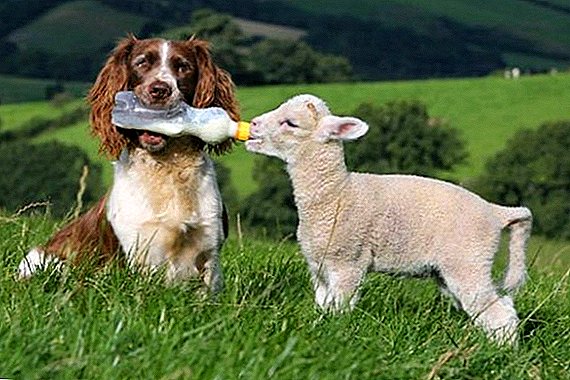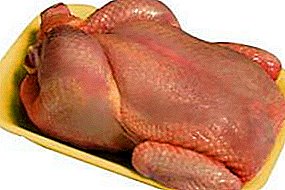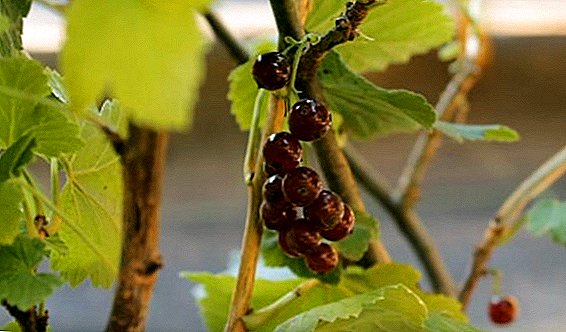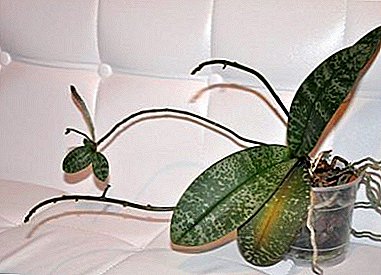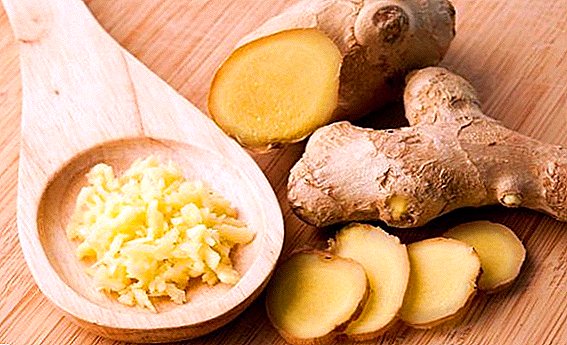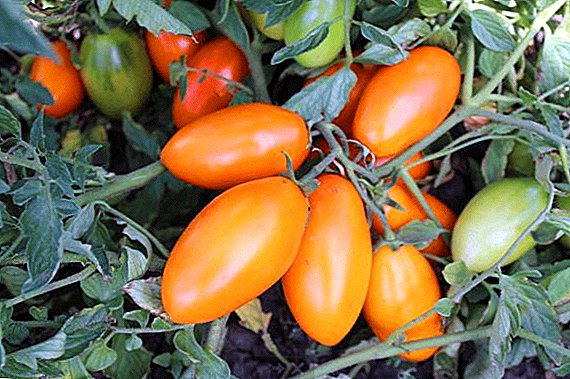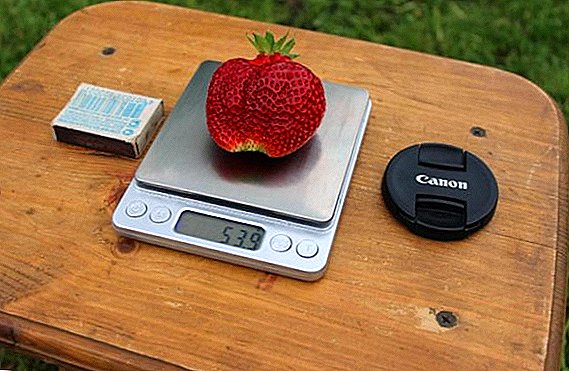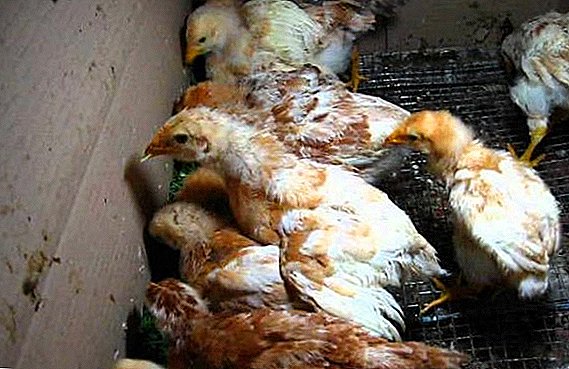 Now there are many breeds and hybrids of chickens. Owners of private farms for personal needs prefer to start up universal and not particularly capricious breeds of poultry. The hybrid of hens Avicolor possesses such qualities. Let us consider in more detail what it represents and the conditions of its content.
Now there are many breeds and hybrids of chickens. Owners of private farms for personal needs prefer to start up universal and not particularly capricious breeds of poultry. The hybrid of hens Avicolor possesses such qualities. Let us consider in more detail what it represents and the conditions of its content.
A bit of history
 The place of breeding this hybrid is the Pologov incubator station located in Ukraine. Her breeders had a goal to bring out chickens that would fly well and at the same time gain enough weight, care of which would not be complicated. The result of their efforts was the creation of a universal and rather unpretentious hybrid Avicolor, which is great for the conditions of a private residence. Among the meat-egg chickens, this cross is the best, although not widely spread. Most likely, due to the fact that his offspring, as befits hybrids, does not inherit their distinctive qualities. Therefore, private owners need to buy eggs or chickens of these chickens.
The place of breeding this hybrid is the Pologov incubator station located in Ukraine. Her breeders had a goal to bring out chickens that would fly well and at the same time gain enough weight, care of which would not be complicated. The result of their efforts was the creation of a universal and rather unpretentious hybrid Avicolor, which is great for the conditions of a private residence. Among the meat-egg chickens, this cross is the best, although not widely spread. Most likely, due to the fact that his offspring, as befits hybrids, does not inherit their distinctive qualities. Therefore, private owners need to buy eggs or chickens of these chickens.
Good indicators of egg and meat productivity are distinguished by crosses broken Brown, dominants, master gray, highsex, hubbard.
Description and Features
These chickens can be distinguished from other breeds by some external signs and behavior patterns.
External features
The exterior of this poultry ordinary and nothing remarkable stands out. Females are distinguished by rounded barrels and breasts, a flat back and brownish plumage. Males are more taut with well developed muscles, white color of plumage with small specks of black or brown color. They have a proportional dense addition, typical of moderate breeds. They have strong legs and yellowish paws. The tail is set high and small in size with medium length braids, darker in color with small lighter patches.  The head and neck of the avicolor is small. The beak is yellow, slightly bent. Males have a large red comb on their heads with 5-6 distinctly pronounced teeth. Chickens have smaller combs, small red earrings on their chins. The face is covered with red skin and a rareish seta. The plumage on the body is tough and rather thick with a light stem, there is fluff. They help the bird to tolerate cold well. Avicolor acquires feathers rather early, and then it is already possible to easily distinguish the male from the female by the color of the feathers. Their ability to gain weight quickly and start laying eggs early is quite attractive to farmers.
The head and neck of the avicolor is small. The beak is yellow, slightly bent. Males have a large red comb on their heads with 5-6 distinctly pronounced teeth. Chickens have smaller combs, small red earrings on their chins. The face is covered with red skin and a rareish seta. The plumage on the body is tough and rather thick with a light stem, there is fluff. They help the bird to tolerate cold well. Avicolor acquires feathers rather early, and then it is already possible to easily distinguish the male from the female by the color of the feathers. Their ability to gain weight quickly and start laying eggs early is quite attractive to farmers.
Character
Differ friendly character, get along with other breeds of chickens and patiently treat the presence of other poultry (ducks, geese). They are noisy and active, they can be kept on the street and in closed chicken houses. Avicolor can be caged, but this poultry shows itself better in more free conditions.
Despite the conflict-free tolerant character, this bird is not shy, which is another of its advantages. But it should be noted that these hens with their fearlessness are rather curious and may suffer because of their curiosity.
Did you know? Chickens are not just stupidly clucking - this is their bird language. The hen begins to speak gently with the chicks when they have not hatched yet. They are able to empathize and worry about chickens, when the chick dies, they are in mourning. Chickens can distinguish more than 100 individuals and remember the one who offended them.
Hatching instinct
These hybrids are well preserved instinct to incubate eggs. They independently sit on eggs and hatch chicks. True, this ability is not particularly used, since chickens do not inherit parental qualities from hybrids. But they can be used for hatching eggs of chickens of other breeds or even other birds (turkeys, pheasants, ducks and others). 
Productive characteristics
This breed has a whole range of productive qualities that attract interest to it.
Weight gain and meat taste
Chickens of this breed are distinguished by a rapid increase in live weight.
Weight gain is as follows:
- at 14 days chicks reach a weight of 250 g;
- on day 21 - 466 g;
- at 4 weeks old - 710 g;
- in 35 days - a little more than 1 kg;
- at 6 weeks - 1.3 kg;
- at 7 weeks - about 1.6 kg;
- at 8 weeks - about 1.8 kg.
Read also about the technology of slaughter and processing of chickens; how to pluck a chicken at home.
Thus, the increase in weight every seven days is about 200-250 g, which is quite a good indicator. This breed contains both for meat, and because of quite decent egg production.  The survival rate of offspring is about 92-95%, which indicates a high survivability of the breed.
The survival rate of offspring is about 92-95%, which indicates a high survivability of the breed.
Avicolor chickens can be grown on a private farm or on an industrial scale. These birds are completely unpretentious to the conditions of housing, nutrition and climatic conditions, they are well tolerated by the cold.
Did you know? Chicken meat is popular due to its budget price, wholesome and taste. With a low fat content (about 10%), it is distinguished by a large amount of protein (18-20 g per 100 g of meat). In addition, this meat contains vitamins A, B1, B2, PP, as well as mineral substances - sodium, potassium, calcium, magnesium, etc.
Avicolor has more tender and less stringy meat than ordinary domestic chickens.
Puberty and annual egg production
This relatively recently derived cross is characterized by a high rate of ripening and growth. Laying hens reach the ability to lay eggs as early as 3.5 months. Due to such early precocity, Avicolor chickens are often raised on large poultry farms. After all, these chickens begin to make a profit earlier than other breeds.  In the first year of their life, laying hens give about 300 eggs. But, it should be noted that such egg production decreases every year by 20-25%.
In the first year of their life, laying hens give about 300 eggs. But, it should be noted that such egg production decreases every year by 20-25%.
Learn more about chicken laying: when it starts with pullets; what vitamins are needed to increase egg production; what to do if chickens do not carry well, carry small eggs, pecking eggs.
Feeding ration
Without a sufficient amount of balanced feed, you will not get the full return from any poultry. Avicolor is not an exception, although it is considered quite undemanding to food.
Adult chickens
Avicolor chicken feeding ration is based on the use of special balanced feeds containing high levels of proteins. This is necessary to maintain performance at a high level, as well as chickens gaining good weight.
When feeding adults, a feeding regime should be developed. If the birds eat according to the schedule, their bodies will work smoothly, which has a positive effect on the regular and productive laying of eggs.
Learn how and what to feed the laying hens, what is the rate of feed for the hens for a day.
This breed is unpretentious in the choice of food. There can be any food - from factory dry food to home-made food (cereals, grain, wheat germ, vegetables, greens).  It is necessary to carefully monitor the flow of all the necessary vitamins and minerals in the body of birds. For this purpose, walking in warm weather on green grassy lawns is very useful. In winter, every day it is necessary to include dry grass in the diet, as well as special complex preparations containing the necessary beneficial elements.
It is necessary to carefully monitor the flow of all the necessary vitamins and minerals in the body of birds. For this purpose, walking in warm weather on green grassy lawns is very useful. In winter, every day it is necessary to include dry grass in the diet, as well as special complex preparations containing the necessary beneficial elements.
Important! Especially carefully it is necessary to monitor the intake of all necessary nutrients during the molting period. During this period, chickens manifest an increased need for food. The molting period in chickens lasts about two months.
Chickens
Chickens of this breed develop rapidly and gain weight. At 28 days their weight is about 1 kg.
Choosing a diet for the offspring of chickens is not difficult. It starts with a boiled egg and ordinary small cereals. As the chicks grow, they switch to adult food.
It should be noted that the hens of this breed are excellent and caring mommies. Therefore, the care of the chicks will not be difficult. 
Content Features
These poultry can be kept in different conditions - both in a chicken coop with a walking range, and in cages.
In the chicken coop with walking
This breed is notable for its vital activity, therefore the best type of content is with regular walking. After all, it is in free conditions that they have a higher egg production rate, and besides, the meat will differ in its improved taste.
Chickens breed Avicolor different frost resistance. Laying birds of this breed can easily withstand fairly low temperatures without loss of egg production and damage to health. They are very unpretentious in care and quickly adapt to any living conditions.
We advise you to read about the choice and purchase of a chicken coop; self-production and arrangement of the chicken coop, the placement of feeders and drinkers.
When keeping chickens of avicolor breed in a chicken coop with a walk should be followed the following recommendations:
- the chicken coop is made of wood and well insulated for winter;
- floors are made of wood, concrete or clay;
- Be sure to provide ventilation in the form of vents and pipes with plugs. At the same time, the area of the windows should be about 10% of the floor area, and the frames should be made double and removable for enhanced ventilation in the summer;
- near the poultry house they set up a closed courtyard for walks;
- place a litter of straw, hay, sawdust, dry foliage on the floor;
- for the convenience of living chickens in the house establish roost from wooden bars;
- in early autumn, it is recommended to disinfect the chicken coop, as well as dry the room well, sprinkle with lime on the floor and change the litter to the fresh one;
- under the perches set pallets for litter. This makes cleaning easier;
- on 1 square. m room should be no more than 5 birds;
- the height of the chicken coop is about 1.8 m. If this figure is higher, the room will be harder to warm in the winter, and if less - there will be problems with airing in the summer;
- temperature regime should be maintained at + 22 ... +25 ° С in summer, and in winter - about +15 ° С.



Important! In order to create comfort, laying hens in the hen house define the place for laying eggs. For this purpose, use the usual boxes of wood, which are filled with straw, hay or sawdust. This litter change as pollution.
In cages
Avicolor chickens are notable for their cheerfulness, active lifestyle, and it is not easy to plant such a bird in a cage. These birds can be kept in cages only if they are accustomed to this way of life from early childhood. Chickens of this breed quickly adapt to any conditions.  When keeping chickens in cages, observe the following standards:
When keeping chickens in cages, observe the following standards:
- the number of birds per 1 square. m should be in the range of 4 to 10 pieces. This indicator depends on the weight and size of the hens;
- the size of the feeder should be about 10 cm per individual;
- front of watering. The rates are as follows - 5 pieces for one nipple, 2 cm for 1 piece, if the drinking bowl is flowing in the form of a gutter;
- airing and flow of oxygen should be closely monitored; fans are used on an industrial scale;
- temperature regime should be in the range of +16 to +18 ° C. When the temperature reaches + 28 ... +30 ° С, the chickens reduce their egg production, and when they reach + 35 ... +36 ° С, the birds may begin to fall from the heat.
Reviews of poultry farmers on avicolor chickens


Avicolor chickens hybrids are fairly unpretentious universal poultry for private farmsteads. They have a high egg production rate, the young growth is rapidly gaining moderate weight, the early age of the onset of laying eggs for laying hens, a good incubation instinct. In addition, they have a friendly disposition and rather unpretentious content.



